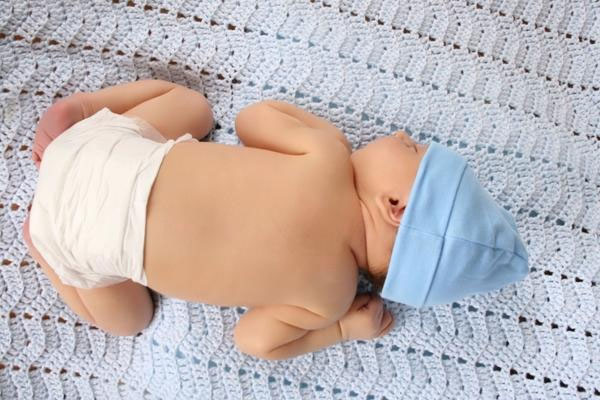Warning of abnormal deaths in babies
December 29, 2009 is probably the day that Dearea, a mother from Baltimore (USA), will never forget. Early that morning, after gently taking his 1-month-old son Charlie away from the crib, Dearea laid her down to sleep next to her. However, upon waking up, Dearea panicked to discover that she had stopped breathing.
Charlie was immediately taken to hospital but doctors said it was too late. The problem was that before, Charlie had no unusual signs. Dearea himself also underwent a completely healthy pregnancy, which was allowed by the doctor to leave the hospital immediately after birth.
For the next several weeks, Dearea continued to ask for help from the medical inspectorate who wanted to clarify the cause of Charlie's death. Finally, she also received a death certificate in which Charlie died of Sudden Infant Death Syndrome (SIDS ) - unusual and unexplained deaths of babies under 1 year of age. Autopsies showed that Charlie 's heart had stopped beating but did not show any signs of suffocation or pressure on the ribs.
Charlie is only one of more than 4500 cases of sudden death of unknown causes every year in the United States. Any sudden death in a newborn is investigated and if no reason is found, it is considered SIDS.
In order to develop such a strategy to prevent and prevent such tragedies, the Center for Disease Control and Prevention recently analyzed detailed information from more than 1,000 deaths in the past 3 years based on a basis New data called SUID Case Registry (records of SUID cases).

Each year in the United States there are about 4500 cases of sudden death in newborns.
Specialists pay special attention to a group of information that includes where the baby is sleeping, where it is found when the baby stops breathing, stays in the cot or not, is breastfed and in the family. Has there been any case of SIDS? For parents, the question for them is how they put their babies to lie down, how they found the baby after their death, the position of their nose and mouth. Previously, such detailed data systems were never collected, said Shannon Stotenbur-Wing, director of the Center for Children and Family Health at Michigan Public Health Institute.
In addition, looking at 140 cases of sleep-related infant deaths in 2010, the Michigan team also found that nearly 60% are sleeping in cradles, carts with convertibles or cars pushed and covered with blankets. at the time of death.
Through thorough research and research, safe sleep standards have been introduced. Accordingly, the ideal sleeping place of a child should consist of only one sturdy cot, fitted with a veil, without blankets, toys or any other objects inside, according to the Academy. American Pediatrics. However, not everyone can afford to buy a crib for their children or keep it still when they move. Hartmann said it is important for parents to keep in mind that they should not sleep with their beds because this is the most unsafe place.
After Charlie died, Dearea participated in a safe sleep awareness campaign, aimed at improving the health of babies and mothers named B'more for Healthy Babies. She said she didn't have any information before being part of the campaign. However, scientists are still trying to understand and conduct more other studies to have a more comprehensive view of the risk factors of sudden death in children.
Reference: Myhealthnewsdaily
- Explain the big crying situation in newborns
- Will babies who breastfed out be better?
- Explain the cause of many abnormal deaths
- Where does the child cry most?
- The secret of babies
- Warning of the risk of death from taking painkillers
- Miraculous abilities of babies
- Hypertension causes high blood pressure
- There is 1 in 12 symptoms that precedes this cancer, see a doctor right away
- 19 interesting facts about babies make adults suddenly fall back
- WHO warns that if you do not want to go to the group of 5% who die every year, reduce drinking
- Why shouldn't cow's milk be given to babies?
 Green tea cleans teeth better than mouthwash?
Green tea cleans teeth better than mouthwash? Death kiss: This is why you should not let anyone kiss your baby's lips
Death kiss: This is why you should not let anyone kiss your baby's lips What is salmonellosis?
What is salmonellosis? Caution should be exercised when using aloe vera through eating and drinking
Caution should be exercised when using aloe vera through eating and drinking